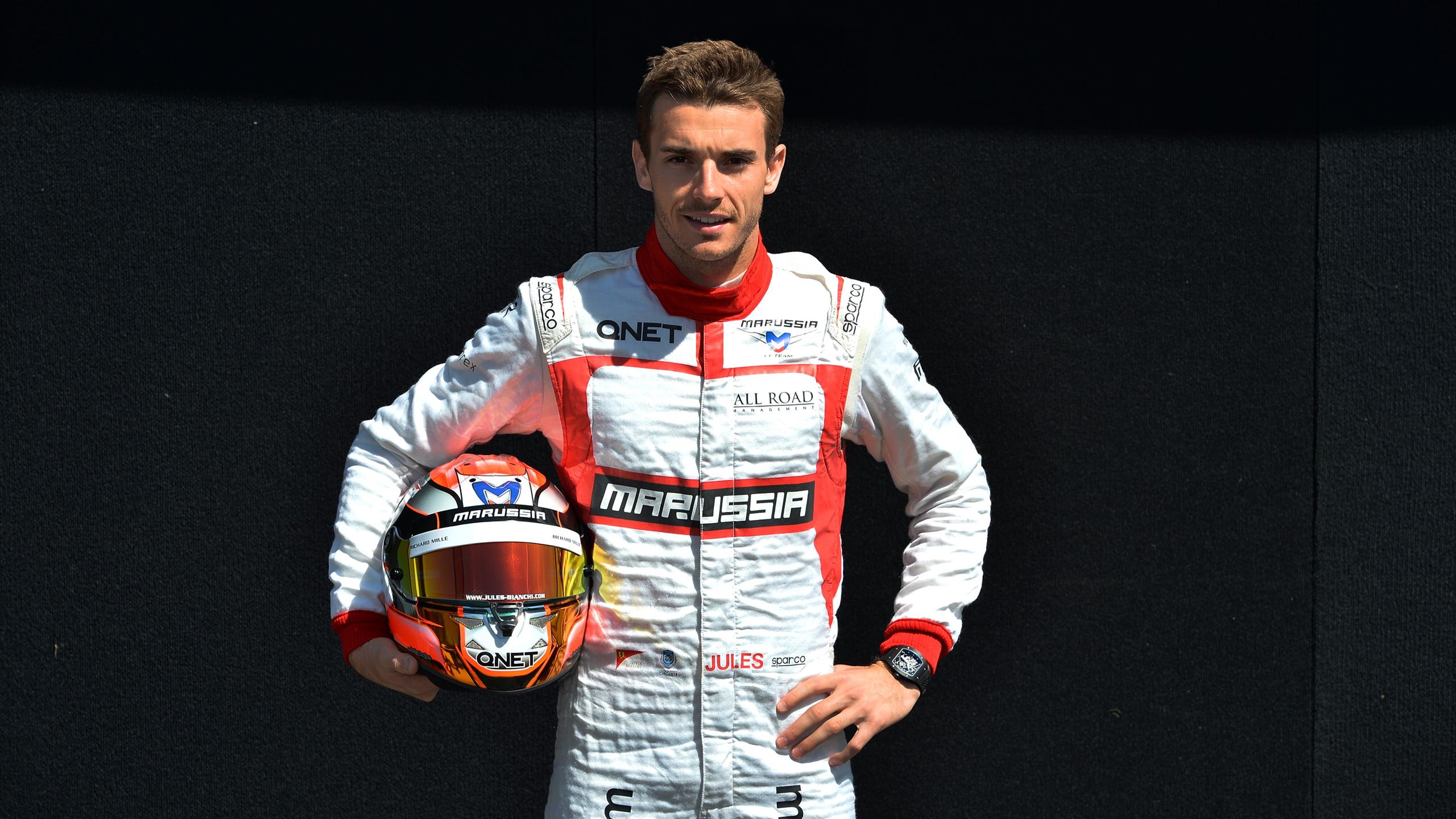Jules Bianchi: 10 Years Later, a Lasting Memory in F1
The last fatality in Formula 1 marked an entire generation
On July 17, 2015, Jules Bianchi lost a battle that had lasted over nine months, following an accident that occurred on October 5, 2014, at Suzuka, towards the end of the Japanese Grand Prix. The Frenchman’s Marussia had crashed into a recovery crane in the pouring rain brought on by Typhoon Phanfone, after he lost control on the waterlogged asphalt.
After a very difficult race marked by increasingly heavy rain, Adrian Sutil had an accident at the Dunlop corner, though without injury. But under this deluge, race control quickly dispatched a recovery vehicle to remove the Sauber stuck in the gravel.
That haste, unfortunately, proved fatal for Jules Bianchi, who was taken to the hospital for emergency surgery on the evening of October 5, 2014. Suffering from a diffuse axonal injury, he remained in a coma for several months.
His family continued to stay by his side and gave regular updates, hoping for improvement in the young driver’s condition. He had signed with Sauber in 2012 as part of his journey towards Ferrari, since he was a member of the Maranello academy.
Sadly, his condition did not improve and, in July, his father shared worrying news about Jules. A few days later, after being repatriated to his hometown of Nice, Jules Bianchi passed away from his severe injuries.
A human and safety legacy
Ten years later, his memory remains alive in the paddock, notably because Charles Leclerc made it to Formula 1 and then Ferrari — a destiny that mirrors in many ways the path once envisioned for his mentor and friend, with whom he had learned the trade during long karting sessions at the Brignoles track.
Leclerc is, of course, the first to carry Bianchi’s legacy, often speaking about his late friend — but he is not the only one. Every year at Suzuka, bouquets of flowers appear at the famous Dunlop curve. And every year in July, several figures in the championship pause to remember the French driver.
The retirement of the number 17 in Formula 1 was one of the earliest tributes paid to Bianchi, and the introduction of the Halo device on single-seaters — even though it was acknowledged that it would not necessarily have saved the Frenchman’s life — was one of the ways to ensure such a tragedy would not happen again.
Since Jules Bianchi, no Formula 1 driver has lost their life — although tragically, there was a death in Formula 2 with Anthoine Hubert in Belgium in 2019. But increasing safety has also been supported by the introduction of the Virtual Safety Car and improved procedures for deploying recovery vehicles to prevent similar disasters.
“An exceptional talent,” says Lowdon
Graeme Lowdon, now director at Cadillac F1, was team principal at Marussia and worked with Bianchi in 2013 and 2014. He remembers a very talented driver, and a first encounter with Charles Leclerc, Bianchi’s protégé.
“He was a very good racing driver, a very high-level driver, an exceptional talent in my opinion,” Lowdon told PlanetF1. “I remember he brought Charles Leclerc to a race — Charles must have been very young at the time.”
“He told me and John Booth, with whom I ran the team, ‘John, this is Charlie. He’s going to be very good. He’ll be much better than me,’ that kind of thing. When Charles joined Ferrari, it was really nice to see because it felt like the continuation of Jules in a way.”
“I remember when Jules raced in Monaco in 2014, he made that overtake at Rascasse, and it was so cool. Everyone on the team, after that race, received an aerial photo signed by Jules, and it’s such a cool thing to have.”
Lowdon was moved to see Leclerc make a similar move in Monaco in 2019: “Then, watching Charles in that race, when he was in the Ferrari and pulled off two almost identical overtakes, I couldn’t believe it!”
“I got goosebumps. The first one worked, but the second one, if I remember correctly, didn’t! I remember thinking that Jules, up there, was watching it all and tipping his hat for the first one — then giving him a slap on the wrist for the second, because he messed it up!”
Source Article : https://motorsport.nextgen-auto.com/fr/formule-1/jules-bianchi-10-ans-apres-un-souvenir-qui-perdure-en-f1,201068.html




